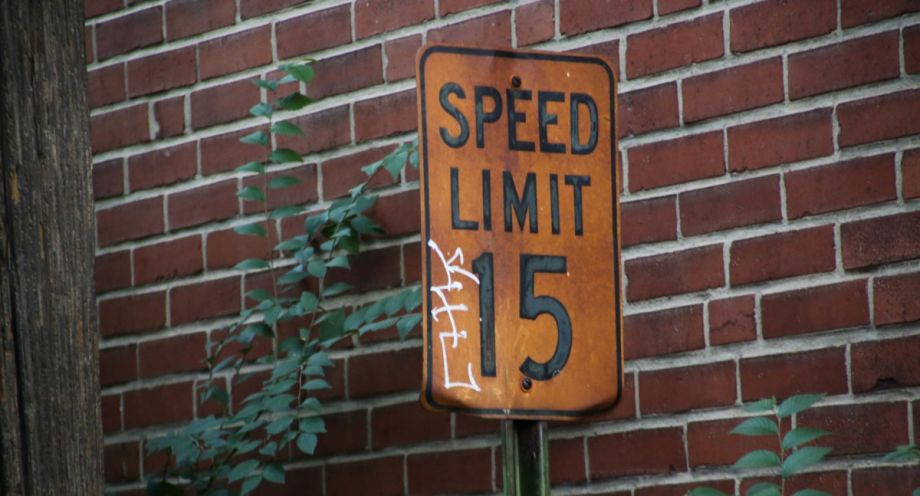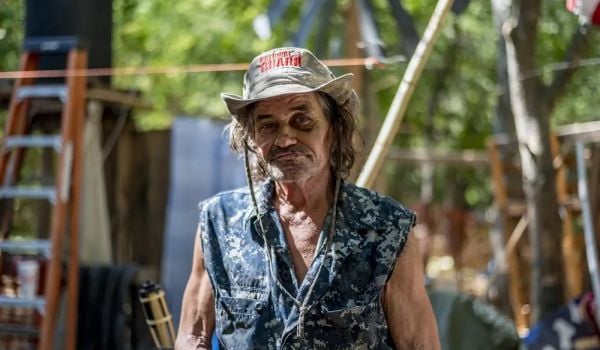Welcome to “The Mobile City,” our weekly roundup of noteworthy transportation developments.
One of the reasons the National Association of City Transportation Officials was established was to challenge the highway-oriented thinking of state transportation departments. City streets, they argued, shouldn’t be treated like rural highways, and transportation policy should change to reflect the difference. Their latest salvo in this fight is a new guide for setting speed limits that throws out a rule that’s been in place since the 1940s.
One of the things one finds far more often on city streets than on rural highways are buses. Even in the changing post-COVID transportation landscape, they continue to move masses around cities, and the rise of ride-hailing hasn’t changed that. One of the two big ride-hailing companies, Uber, has added functionality to its app that recognizes the role transit plays by providing transit information and making it possible to purchase transit fares from within its app. That functionality, which made its debut in Denver last year, will now be available to riders on 13 transit systems serving three of Ohio’s largest metropolitan areas.
That’s not the only development on the integration-of-modes front this week. Austin will join the handful of cities that have moved to make their bike-share and mass transit networks a seamless whole. In Austin, the process will go one step further than it has in other cities, however: The city’s mass transit agency will actually run the bike-share network.
And in a bit of good news for Northern New Jersey commuters, a 110-year-old choke point on the Northeast Corridor will finally be replaced: Work on a new Portal Bridge across the Hackensack River will begin next year.
“City Limits” Guide Recommends Scrapping the 85th-Percentile Speed-Limit Rule
Right now, speed limits on streets and highways everywhere in the United States are determined by a formula known as the “85th percentile” method. This method examines the speeds at which cars travel on a street and sets the speed limit so that 85 percent of the cars are driving at or under it.
This rule works just fine on open rural highways and freeways. On city streets, however, not so much. They can, and do, end up setting limits high enough to put pedestrians and other non-auto users at greater risk of injury and death.
Smart Cities Dive reports that the National Association of City Transportation Officials (NACTO) has decided the time has come to fix this. The organization’s new guidebook, “City Limits,” responds to the National Transportation Safety Board’s (NTSB) call for a total rethinking of the way road speed limits are set.
Its key recommendations:
- Setting default speed limits on many streets at once (such as 25 mph on all major streets and 20 mph on all minor streets),
- Designating slow zones in sensitive areas, and
- Setting corridor speed limits on high priority major streets, using a safe speed study, which uses conflict density and activity level to set context-appropriate speed limits.
NACTO Program Manager Jenny O’Connell called the 85th-percentile method “oversimplified and outdated” in a statement. She elaborated on that for Smart Cities Dive: “That was based on an assumption that drivers act rationally and prudently and know how fast to go for the street conditions,” O’Connell said. “And that’s a flawed assumption. Drivers make decisions based on a lot of cues around them, and those cues aren’t always based fully in rationality.”
The dramatic rise in average traffic speeds on many city streets after COVID-19 took lots of cars off them reinforces her point. Where other groups of users share city streets with cars, their needs for safe travel also need to be taken into account, which means that allowing cars to move as fast as possible should cease to be the top priority for transportation officials and planners.
The article also notes that there is a racial-justice aspect to the setting of speed limits. Current practices make police stops of vehicles driven by non-white people more likely, it says, and road design and speed limits can help reduce the need for police enforcement.
“A safe street is not one where safety is determined by how fast someone can comfortably drive, but rather one where a person can comfortably walk, ride a bike, and cross the street using a wheelchair,” Ryan Noles, senior transportation planner for the City of Boulder, Colo., said in the NACTO news release accompanying the guide’s release.
Uber Transit Feature Arrives in Cities Across Ohio
“Sometimes the fast lane is the bus lane,” ride-hailing leader Uber says on its website by way of explaining why it added transit information to its ride-hailing app. Launched in Denver at the beginning of 2019, Uber’s in-app transit feature lets users see real-time bus and train arrival information and directions from within the Uber app, and a partnership between Uber and Masabi, a developer of fare collection technology, also allows Uber users in Denver to purchase transit tickets and fares from within the app.
Metro Report International reports that this month, Uber is rolling out its transit functionality on a large scale in the Buckeye State.
Uber Transit Ticketing is now available to riders of 13 transit systems serving all or parts of all but one of Ohio’s principal metropolises: Akron, Cleveland, Sandusky, Toledo, Columbus, Youngstown and Cincinnati, including northern Kentucky. (Dayton is the outlier.)
Uber is offering the service through an agreement with NEORide, a consortium of leading transit agencies serving Ohio urban areas. 13 of the 15 members of NEORide now interface with Uber:
- in Akron-Canton, the Metro Regional Transit Authority in Summit County (Akron) and the Stark Area Regional Transit Authority in Stark County (Canton);
- in the Cincinnati area, the Butler County Regional Transit Authority (BCRTA), the Southwest Ohio Regional Transportation Authority (SORTA, doing business as METRO), the Cincinnati Bell Connector downtown streetcar, and the Transit Authority of Northern Kentucky (TANK);
- in Toledo, the Toledo Area Regional Transit Authority (TARTA) in Lucas County;
- around Cleveland, LAKETRAN in Lake County, Medina County Public Transit (MCPT), and Portage Area Regional Transit Authority (PARTA) in Portage County;
- Lancaster-Fairfield Transit in Lancaster County, southeast of Columbus;
- the Sandusky Transit System in Erie County;
- and the Western Reserve Transit Authority in Mahoning County (Youngstown).
As of now, two NEORide members have yet to offer this feature: the Greater Cleveland Regional Transit Authority (RTA) in Cuyahoga County, Ohio’s largest mass transit system, and South East Area Transit (SEAT) in Muskingum, Guernsey and Noble counties.
The rollout represents the first launch of Uber’s transit feature across multiple agencies and across an entire state.
“With a public transit option now appearing in the Uber app, I hope people who wouldn’t regularly consider transit will realise how easy and affordable it can be,” Ben Capelle, oresident of the NEORide board and CEO of Laketran, told Metro Report. “The partnership with Uber makes transit a more visible and accessible option by highlighting regional transit systems that Uber users may not know exist.”
Austin’s Transit Agency to Co-Manage Its Bike-Share Network
The City of Austin Department of Transportation and Capital Metro have reached an agreement that will expand the Texas capital’s bike-share system by bringing in the city’s mass transit agency as a managing partner.
A City of Austin news release gives details of the arrangement whereby Capital Metro will manage the city-owned BCycle bike-share system along with Austin DOT. Through the partnership, BCycle will be marketed as a first- and last-mile mobility option for Capital Metro riders, who will be able to see availability and rent bikes via the Capital Metro app. Other goals of the partnership include adding bikes and stations to the BCycle fleet and network, improving outreach to neighborhoods outside the downtown core, and fully electrifying the BCycle fleet.
Bike Share Austin, a local nonprofit, will continue to operate the system for the city and Capital Metro.
Since COVID-19 shelter-in-place orders took effect, bike-share use has risen significantly in Austin, with e-bikes being checked out at three to four-and-a-half times the rate of pedal bikes. Currently, the Austin BCycle network has 75 stations and 500 bikes, including 200 e-bikes on loan from BCycle/Trek under a demonstration project.
Yes, New Jersey Will Replace the Portal Bridge
New Jersey Advance Media reports that the end is finally in sight for a 110-year-old choke point that delays New Jersey Transit (NJ Transit) and Amtrak riders hundreds of times each year.
The choke point is the Portal Bridge, a swing bridge that carries the two-track Northeast Corridor (NEC) line over the Hackensack River near Kearny. The bridge frequently gets stuck in the open position, causing delays and backups up and down the NEC. Because the existing bridge is jam-prone, the U.S. Coast Guard has forbidden bridge openings during morning and evening peak hours.
Work on its replacement will now proceed thanks to an agreement between NJ Transit and Amtrak that will allow construction to start next spring. The agreement opens the way for the execution of a full funding grant agreement with the Federal Transit Administration that will furnish $766.5 million of the new bridge’s $1.8 billion construction cost. New Jersey and Amtrak will have to pick up the rest of the tab; New Jersey had already agreed to finance $800 million of the balance in 2018, and the Federal Railroad Administration awarded $55 million to Amtrak for its share of the project last February.
More than 450 trains carrying some 200,000 passengers cross the span each day.
Know of a project that should be featured in this column? Send a Tweet with links to @MarketStEl using the hashtag #mobilecity.

Next City contributor Sandy Smith is the home and real estate editor at Philadelphia magazine. Over the years, his work has appeared in Hidden City Philadelphia, the Philadelphia Inquirer and other local and regional publications. His interest in cities stretches back to his youth in Kansas City, and his career in journalism and media relations extends back that far as well.
Follow Sandy .(JavaScript must be enabled to view this email address)


_600_350_80_s_c1.jpg)






_on_a_Sunday_600_350_80_s_c1.jpeg)






